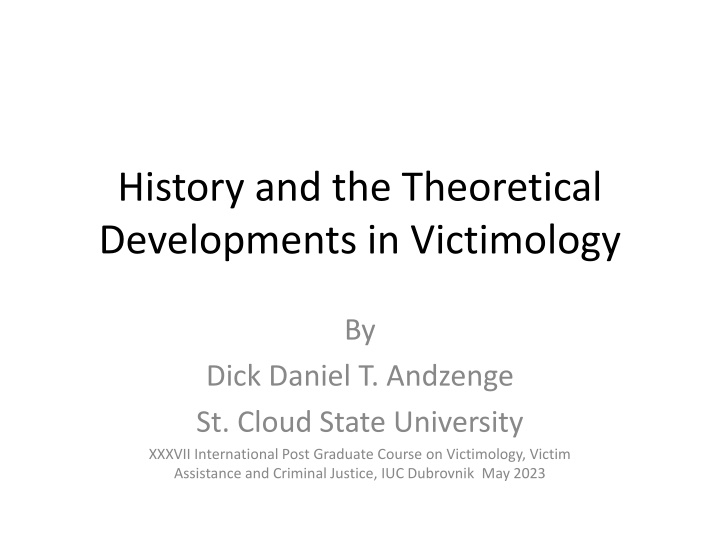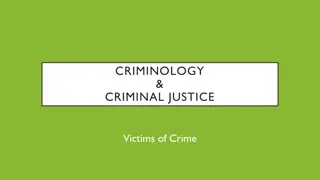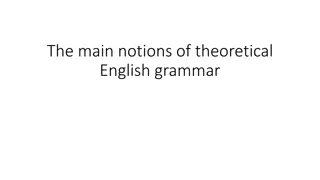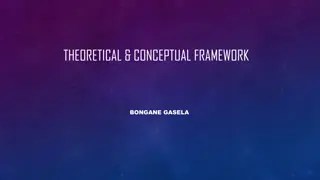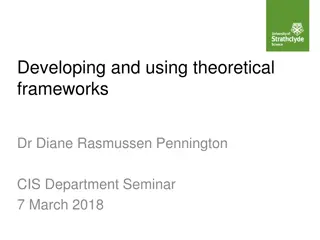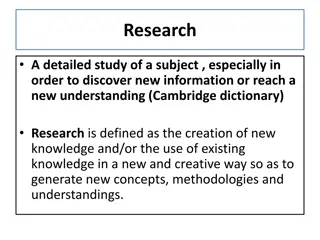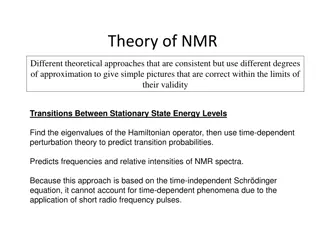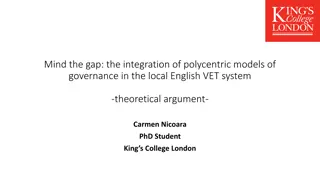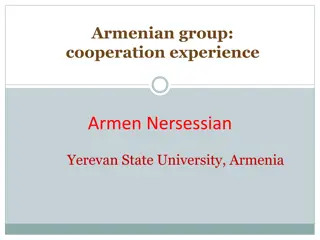Theoretical Developments in Victimology and Purposes of Research
Victimology explores the role of victims in crimes, identifying risk factors, understanding victimization consequences, and advocating for victims' rights in the criminal justice system. The field encompasses academic origins, complementary studies with criminology, and specific research areas.
Download Presentation

Please find below an Image/Link to download the presentation.
The content on the website is provided AS IS for your information and personal use only. It may not be sold, licensed, or shared on other websites without obtaining consent from the author.If you encounter any issues during the download, it is possible that the publisher has removed the file from their server.
You are allowed to download the files provided on this website for personal or commercial use, subject to the condition that they are used lawfully. All files are the property of their respective owners.
The content on the website is provided AS IS for your information and personal use only. It may not be sold, licensed, or shared on other websites without obtaining consent from the author.
E N D
Presentation Transcript
History and the Theoretical Developments in Victimology By Dick Daniel T. Andzenge St. Cloud State University XXXVII International Post Graduate Course on Victimology, Victim Assistance and Criminal Justice, IUC Dubrovnik May 2023
The Scope of Victimization Every crime has at least one victim NCVS (2012): 6,842,593 violent victimizations 19,622,977 household victimizations Victimization: events that harm individuals, households, businesses, communities, or institutions Criminal victimization: harm is suffered as a result of a violation of the criminal law
Purposes of Victimology The study of crime victims and the circumstances surrounding their victimization Ensuring victims are provided with services and advocates Identifying risk factors for different types of victimization
Victimological Research Estimating the extent of different types of victimization Explaining: Why victimization occurs To whom it occurs Where it occurs Understanding the consequences of victimization Victims rights and remedies Victims roles in the criminal justice (CJ) system
Victimology and Criminology Complementary areas of study Criminology considers crime from the offender s perspective Victimology considers crime from the victim s perspective Opinions differ as to whether victimology is a subfield of criminology, a separate field, or a distinct field with overlapping focus
Academic Origins of Victimology First-generation victimologists First theory of victimization: victim precipitation Victims contribute to the crime event through: Victim facilitation Victims often set in motion the events that result in their own victimization Victim provocation Victims can overtly act in ways that result in their victimization
Hans von Hentig 1887 1974, Germany The Criminal and His Victim (1948) First to consider the role of the victim in a crime Typology of victimization dividing victims into general classes and psychological types
von Hentigs Typology General Classes of Victims 1. The young 2. The female 3. The old 4. The mentally defective and other mentally deranged 5. Immigrants, minorities, and dull normals Psychological Types of Victims 6. The depressed 7. The acquisitive (Ponzi schemes) 8. The wanton 9. The lonesome and the heartbroken 10. The tormentor 11. Blocked, exempted, and fighting victims (drug dealer robbery)
Beniamin Mendelsohn 1990 1998 Israeli defense attorney Father of Victimology Coined term victimology Advocated the study of victims to be separate from criminology Typology categorizing victims according to their degree of responsibility
Mendelsohns Typology 1. The completely innocent victim Example: children 2. The victim with minor guilt (also known as victims due to ignorance ) Example: robbery 3. The victim who is as guilty as the offender (also known as voluntary victims ) Example: fistfight 4. The victim who is more guilty than the offender Example: attacking abuser 5. The most guilty victim (also known as victims who are guilty alone ) Example: self-defense 6. The imaginary victim (also known as simulating victims ) Example: senile person
Stephen Schafer 1911 1976, b. Hungary Victimology: The Victim and His Criminal (1977) Much victimization is a result of the victim offender relationship Typology based on concept of functional responsibility Victims are responsible for not provoking offenders and for actively preventing their own victimization
Schafers Typology 1. Unrelated victims (bank robbery) 2. Provocative victims (insults) 3. Precipitative victims (unprotected valuables) 4. Biologically weak victims (children) 5. Socially weak victims (minorities) 6. Self-victimizing victims (drug addicts) 7. Political victims (McCarthyism)
Marvin E. Wolfgang 1924 1998 Patterns in Criminal Homicide (1957) Examined victim-precipitated homicide First to use official data Philadelphia Police Dept. homicides from 1948 to 1952 588 homicide victims, 26% victim precipitated
Sellin and Wolfgangs Typology 1. Primary victimization Individuals personally victimized by offenders Robbery 2. Secondary victimization Impersonal targets Shoplifting 3. Tertiary victimization Public or society at large 4. Mutual victimization Victim consents and is also an offender Assisted suicide 5. No victimization No victim or offense is minor and unrecognizable
Menachim Amir Born 1930 Graduate student of Wolfgang Patterns in Forcible Rape (1971) Examined victim precipitation in forcible rape Typology based on continuum of responsibility Some victims have no responsibility; others are active participants
Amirs Continuum of Victim Precipitation in Forcible Rape 1. Unsoliciting victims Purely accidental 2. Precipitative victims Placed himself or herself in risky situation Bears some responsibility 3. Seductive victims Provocative language, dress, or manner Either a conscious (intentional) or an unconscious (because of victim proneness) participant
Criticisms of Amirs Typology Implies that some victims have a psychological, unconscious desire to be raped Based on rapist s perception of behavior Victim blaming Led to rejection of Amir s work, as well as stopping the progression of victim precipitation as an explanation for victimization
Grass-roots Origins of Victimology Social forces also driving development of the field of victimology Civil rights movement Women s movement Children s movement Separately working toward shared goals: Highlighting plight of crime victims Advocating for changes in treatment of victims by society and CJ system
Civil Rights Movement 1950s and 1960s Focused on ending many forms of discrimination, including in CJ system Furthered causes of victims by highlighting unequal treatment of African American victims and offenders: Police brutality Legal representation in the courts Disparate sentences
Womens Movement 1960s and 1970s Especially influential in two CJ areas: Sexual victimization Repeal of marital exemption laws Legally impossible for wife to pursue rape charges against husband Spousal abuse Poor response by CJ system shows women have subservient place in society Development of victim services, shelters, and legal actions
Childrens Movement 1960s: first time children were recognized as a group of victims with special needs 1962: Dr. Henry H. Kempe drew attention to the issue of child abuse Battered-child syndrome Occurs when a young child suffers repeated physical abuse by parents or other caregivers Called on medical community to report suspected cases Advocates pushed for expanded rights and services for child crime victims
Political Origins of Victimology Efforts of academic interest and grass-roots movements coalesced United States began to address, politically, the plight of crime victims Change largely driven by: Law and Order movement President s Commission on Law Enforcement Federal legislation
Law and Order Movement 1960s and 1970s Based on particular crime-control philosophy Swift justice Harsh punishments CJ efficiency Support for victims rights Victims changing roles in CJ process
Presidents Commission on Law Enforcement 1960s Law Enforcement Assistance Act (LEAA) 1965 Office of Law Enforcement Assistance The Challenge of Crime in a Free Society 1967 Recommendation for CJ response to victims, among other issues addressed
Federal Legislation 1980s and 1990s Many federal laws passed For example: Child Abuse Prevention and Treatment Act, 1975 Victims of Crime Act, 1984 Violence against Women Act, 1994 Megan s Law, 1996
Summary of Origins of Victimology First-generation academic origins Assessed degree to which victims contribute to criminal events through precipitation, facilitation, and provocation Development of typologies, early empirical research Grass-roots origins Separate social justice movements Aimed at improving lives of marginalized groups, including crime victims Political origins Changes in policy and law related to victims
